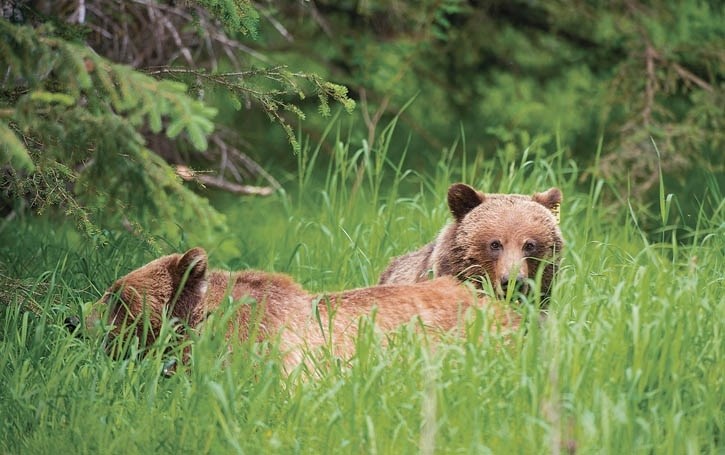MD OF BIGHORN – While increased development in Canmore and Banff have created challenges to grizzly bear movement in the Bow Valley, the situation is a bit different in the larger Municipal District of Bighorn.
With less development and smaller communities, the real barriers to grizzly bear movement are the recreational trail networks of the municipality.
At the July 12 MD council meeting, Adam Linnard with Yellowstone to Yukon (Y2Y) Conservation Initiative spoke about the impact humans are having on grizzly bears and the increased conflict risk.
“The Bow Valley is one of the most important areas for grizzly bears in the Y2Y region. If we fracture grizzly bear movement in this region, we hurt that chain,” Linnard said. “Helping grizzlies move through here is important.”
Linnard said the risk of conflict between humans and grizzly bears is most noticeable in the Canmore area and the southeast corner of the MD. It is also mostly found on the trail networks of the MD. Looking ahead to 2050, the development footprint in the Bow Valley is expected to rise by 48 per cent since 1970.
The paper – Grizzly Bear Movement and Conflict Risk in the Bow Valley: A Cumulative Effects Model – was put together by Y2Y officials and environmental consultants ALCES Landscape and Land Use.
It examines the growth of human development and recreation and its impacts on grizzly bear travelling in human-dominated landscapes as well as the risk of bear-human conflicts.
The modelling presented in the paper show grizzly bear movement has been drastically altered since the 1970s and leads grizzly bears to use upslope and less desirable terrain more frequently.
Though development has been a key factor in areas of the Bow Valley, recreation has impacted grizzly bear movements in Bighorn.
“Would you say that the trail networks are one of the bigger issues, less about development,” Coun. Joss Elford said.
Linnard said this was the case, and it was a surprising result of their research.
“That has struck a chord with a lot of folks we have presented to,” Linnard said. “One of the things we tend not to do when making decisions on a development proposal is how that will also bring additional recreation.”
Linnard added developments need to not only look at how their own footprint on the land, but also the recreational activities around the development.
Administration asked how much of the modelling was based on field-based research in the area.
“All of the data is rooted in grizzly bear location data and the resource selection functions are based on the decades of research in the Bow Valley,” Linnard said. “This valley is very well researched for grizzly bears and what grizzly bears choose to do and choose not to do. We didn’t do additional field research.”
Reeve Lisa Rosvold was also surprised by the data presented by Linnard.
“I know we live in a destination area and Travel Alberta is spending a lot of money bringing more and more people here,” Rosvold said. “Is that type of representation at the roundtable or part of the conservation?”
Linnard noted a roundtable can be a good idea if it is active and working.
“It can be a permanent forum for that work where jurisdictions are present and at the table,” he said.
Coun. Rick Tuza asked if Y2Y looked beyond the Bow Valley, specifically at the eastern slopes moving north into Ward 4 of the MD.
“Not in this modelling. This is the kind of modelling that we could do with time and resources in other locations,” Linnard said. “We do look at that landscape in slightly different context. We are participants in a lot of eastern slope work.”
Rosvold felt the data presented a clear message and stated she was looking forward to what the organization would accomplish next.
“All the data is informative and good to see but figuring out how to move to the next steps for what we can do as a municipality to implement some of the suggestions or advice from the data, is a good next step to bring forward.”
Linnard added municipalities working together would help bring changes on a provincial and federal level.
“We would love to see the province more active in trail planning and trail maintenance and enforcement,” Linnard said. “It would be great to have the municipalities expressing that need to the province.”



